Calling scientists of all colors
More black, Hispanic, and Native American scientists and engineers are needed to solve important problems
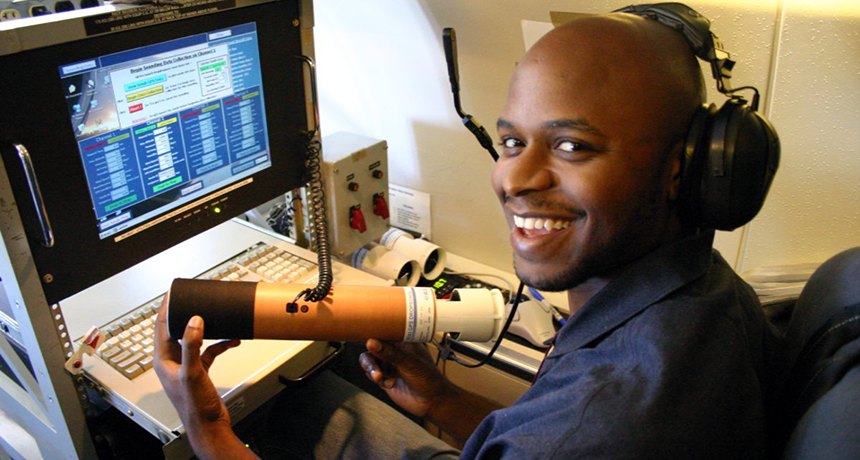
DaNa Carlis flew in a jet about 13,700 meters (45,000 feet) above the Pacific Ocean, near Hawaii, to gather weather data. Here, he is about to release an instrument called a dropsonde to measure factors such as temperature and wind speed.
D. Carlis
By Roberta Kwok
When Gillian Bowser was a kid in Brooklyn, N.Y., she loved exploring the borough’s botanic garden and museum. She remembers them as “the two most magical places on Earth.” And a favorite spot was the garden’s display of tiny bonsai trees. They were so small that they seemed to be made for fairies.
At first, Bowser wanted to be a medical illustrator, a person who draws the human body. She liked sketching animals. But in a medical illustration class in college, she proved better at drawing dragons than people. Her teacher suggested that perhaps medical illustration wasn’t the career for her. Maybe she should consider science, her teacher said. So Bowser joined a biology lab and studied the African striped mouse. This rodent with orange-tinged ears “was the cutest little booger,” she says.
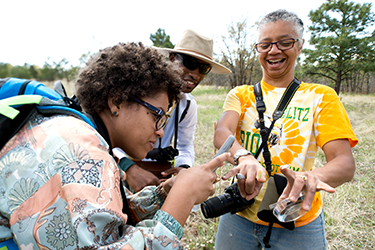
In time, Bowser became an ecologist, someone who investigates links between animals, plants and their surroundings. She has worked with a “wacky variety” of species, including prairie dogs and desert tortoises. For one project, Bowser and two colleagues wanted to know where U.S. elk and bison got their nutrition in winter. So the team collected snowballs of frozen urine the animals left behind in Yellowstone National Park. Other people working at the park gave the researchers a fitting nickname, she recalls: the “Pee Amigos.”
Today, Bowser is a research scientist at Colorado State University in Fort Collins. She monitors butterflies and other insects in national parks around the world. One of her projects is in the Andes Mountains of Peru. There, she studies how a glacier’s retreat affects insects such as dragonflies and bumblebees.
Being a scientist is a great job for curious people, Bowser says. “If you like asking questions, science is the perfect field,” she says. “We’re always exploring.”
Bowser is African-American, and one of about 700,000 black, Hispanic and Native American scientists and engineers in the United States. They do everything from predicting weather to writing computer programs that simulate biological molecules. These minorities are what researchers call “underrepresented” groups in science, technology, engineering and math (STEM). The reason: Even though the combined number of black, Hispanic and Native American people in the United States is high, they hold relatively few of the degrees and jobs in these fields.
STEM fields need smart, talented people. They need many such people — and it helps when these workers have a broad range of different experiences and perspectives. So when members of minority groups are left out, research may not advance as quickly or as effectively. Consider the main story line in the book and movie Hidden Figures: A black female mathematician makes important contributions to a NASA team by performing very complex computations needed to ensure the safety of astronauts.
Some research even suggests that when groups have to solve problems, diversity is more important than skill. So increasing the number of minorities in STEM could help the world tackle hard issues better, such as climate change and disease.
“We need the best talent we can get,” says Shirley Malcom. She heads the education and human resources programs at the American Association for the Advancement of Science (AAAS) in Washington, D.C. She argues: “We need people who are coming at problems from a lot of different directions.”
A different standard
Blacks, Hispanics and Native Americans make up nearly one-third of the U.S. population. But their numbers in science and engineering are far lower. These American minority groups earn only 20 percent of bachelor’s degrees in STEM. They hold 11 percent of the jobs in these fields. And they obtain a mere 8 percent of PhDs in science and engineering.
Why might this be happening? Well, maybe students from these backgrounds just don’t like science and engineering. But “that’s not true,” Malcom says. For instance, consider the results of a 2016 survey. It suggested that black, Hispanic and Native American first-year college students were nearly as interested as white and Asian students in STEM majors. The data were collected by the Higher Education Research Institute at the University of California, Los Angeles.
So several other factors might instead explain the trend. Students in underrepresented minority groups simply may not be encouraged to study science and engineering. If their schools don’t offer good STEM classes, the students may arrive at college less prepared than their classmates. And people may assume — without even realizing it — that black, Hispanic or Native American researchers aren’t as smart as white researchers. This thinking, called implicit bias, also can make employers less likely to hire a minority scientist or engineer.
Minority researchers often are judged by a different standard, Malcom says.
That sounds pretty depressing. But many hard-working, passionate minority scientists and engineers have succeeded. For some, they meet an inspiring mentor or teacher. When they run into trouble, they ask for help. And new programs at universities are now attempting to jumpstart students’ progress.
Someone to look up to
The path to science can start with a strong role model. That was the case for DaNa Carlis. He grew up in Tulsa, Okla. His best friend’s father was a doctor — the only black physician Carlis knew. The doctor often bragged about how smart he was. “You would think he was Einstein,” Carlis says. “But to me, he was Einstein!”
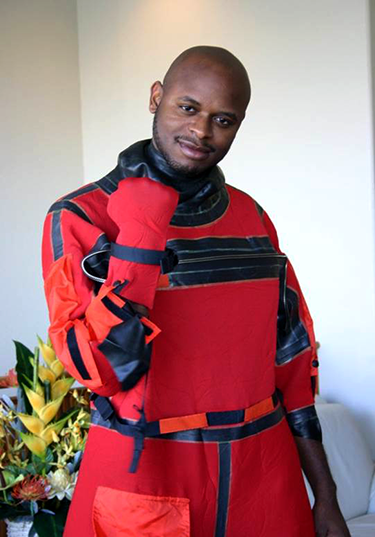
Carlis eventually became a meteorologist, a scientist who studies weather patterns. For one project in Hawaii, he helped write computer programs to predict events such as flash floods. These dangerous events can occur after heavy rains. He now works at the National Oceanic and Atmospheric Administration (NOAA) in Silver Spring, Md.
Seeing his friend’s successful dad made Carlis feel confident that he could excel in science. “If you see it, you can be it,” he says.
If kids don’t know any scientists of their race or ethnicity, they may have to get creative. For example, they might read books or watch movies about minority scientists, such as Hidden Figures.
Students also can find programs where they might meet role models. For instance, Black Girls Code offers workshops around the country to teach girls about computer programming. Many federal science agencies run summer activities and internships. Bowser co-founded a program called the Rocky Mountain Sustainability and Science Network. Many minority college students have taken part. Students in it have, among other things, shot videos in national parks of butterflies, bees, flies and spiders.
Staying on track
Sometimes, just a small nudge can help minority students succeed. That’s what school administrators at Georgia State University (GSU) in Atlanta have found.
In 2003, the school’s black and Hispanic students were about 20 to 30 percent less likely to graduate within six years than were white students. Some of these minority students were the first in their family to attend college. So they might have had less guidance from parents than would their peers from more educated families. Many also had gone to high schools that didn’t prepare them well in science and math.
Timothy Renick wanted to close that gap. He is in charge of GSU programs for student success. Renick’s team analyzed 10 years of student records. They linked about 800 types of events with problems later in school. For example, science students who got a C in their first chemistry class had only a 40 percent chance of graduating on time.
That list of events became the core of a new plan. In 2012, GSU started tracking all those factors for every student. If one of the 800 incidents occurred, an advisor quickly offered the student tips. For instance, a student who failed a math test might be directed to the math tutoring center.
Renick compares GSU’s new program to the global positioning system, or GPS, that can provide driving directions in real time. In the past, no one noticed if students made a wrong turn. Many of those students eventually failed classes or dropped out. But the new tracking system corrects their path right away. “If you discover after one block or one turn, ‘Whoops, I made a mistake,’ the GPS will make a couple of adjustments,” Renick says. “You’ll be right back on the right road.”
This program attempted to do the same thing for GSU students. And it worked! Black and Hispanic students started graduating at equal or even higher rates than white students. The number of STEM degrees earned by black students increased by 69 percent. The number granted to Hispanic students more than doubled.
But what should students do if their college doesn’t offer this support? They may have to seek help on their own. They could ask a dorm resident advisor, academic advisor, teacher or older classmate for guidance. “There’s nothing to be embarrassed about,” Renick says. “You just need to be a little bold.”
Building up your brain
Struggling in science and engineering is normal. Melisa Carranza Zúñiga remembers that feeling. She is a computer scientist who is currently participating in a training program offered at Google in Mountain View, Calif.
Zúñiga fell in love with computers when she was only a few years old. Her dad encouraged her to play with one at home. “They seemed like magical big boxes of mystery,” she says. “I couldn’t believe how awesome they were.” She decided to be an engineer.
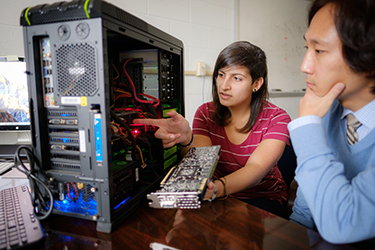
But her first classes in college were tough. “I was completely confused,” she says. “I was so sure I would have to drop out.” Still, Zúñiga kept studying hard. She did all the exercises in her textbooks. She worked with classmates. And she asked her teacher for help. By the end of the first semester, she had gotten the hang of it.
Zúñiga went on to earn a master’s degree in computer science at Wake Forest University in Winston-Salem, N.C. She worked on a software program — a computer model — that simulates the formation of biological molecules called proteins. This program might one day help researchers design better treatments for illnesses such as Alzheimer’s disease. In July, she started an engineering residency program at Google.
Students shouldn’t feel discouraged if they have trouble, she says. “If you’re feeling dumb, it’s a good sign,” Zúñiga says. “You’re learning something new!”
Ramon Lopez seconds that assessment. Today he’s a physicist at the University of Texas at Arlington. But during his second semester in college, he got a bad grade on a calculus test.
“I decided that there were two possibilities: Either I was really stupid or I had studied very poorly,” he recalls. “And I decided, I don’t think I’m really that stupid, so it must be that the way I had studied was wrong.”
Students shouldn’t feel discouraged. “If you’re feeling dumb, it’s a good sign,” Melisa Carranza Zúñiga says. “You’re learning something new!”
He changed his study habits and worked carefully through the problems in the book. On the next test, he got an A. “Students should always begin by believing in themselves,” he concludes. “And it should take a lot of evidence to prove otherwise.”
Rodolfo Mendoza-Denton compares struggling in science to exercising. He is a psychologist at the University of California, Berkeley. When your legs burn, he notes, you’re getting stronger. And wrestling with a hard science or math problem builds intelligence, he says. “You’re working out your brain.”
Graduate school often poses the biggest hurdle to a student in STEM. It requires advanced research, difficult classes and teaching college students. Many science and engineering grad students want to give up at some point.
“The first year, it’s just crazy,” notes Lopez. “You’re just trying to figure out: ‘How am I going to survive this?’”
And the work isn’t the only problem. Students may feel isolated in a new place where they don’t know anyone.
Minority students should seek a graduate school where they feel comfortable, Lopez says. He suggests that they ask current students whether people are friendly and teachers are supportive. If their cultural identity is important to them, students should look for a school located where they can find the food they like and meet people with similar backgrounds.
The need for community
Much of the world’s cutting-edge science and engineering work happens at what are known as research-intensive universities. Sometimes, though, even the most talented minority graduate students decide they don’t want those jobs.
Kenneth Gibbs, a biologist, has studied this issue. He works at the National Institutes of Health* in Bethesda, Md. Part of his job at its institute of general medical sciences involves studying science education and diversity. Gibbs’ team surveyed 1,500 people who had just received PhDs in biomedical sciences. They asked the participants how interested they were in working at research universities. Then they compared responses between graduates with similar levels of accomplishments, confidence and support from advisors.
Black, Hispanic and Native American graduates were 40 to 54 percent less likely than white and Asian men to be very interested in becoming professors at research universities. White and Asian women were 36 percent less likely than their male counterparts to express strong interest. (Women also are underrepresented in science.) The researchers published their results three years ago in PLOS ONE.
Underrepresented minority researchers might feel like they won’t fit in at a research university. Few of their colleagues may be of the same race or ethnicity. Perhaps others at their graduate school have treated them in a biased way or did not value their work.
“People need to feel as though they belong,” Gibbs points out. Universities should build better communities for scientists from underrepresented groups, he says.
Where a school is not supportive, minority researchers may need to look for peers online. Some people connect on Twitter. They can search for terms such as #BLACKandSTEM or #SACNAS (the name of an organization for Chicanos, Hispanics and Native Americans in science). “You won’t be alone if you go down this path,” Gibbs says.
A chance to make a difference
The number of black, Hispanic and Native American scientists and engineers is growing. For example, in 1995, underrepresented U.S. minorities earned about 4 percent of PhDs in STEM. Within two decades, that fraction had roughly doubled. But when people imagine a typical scientist, many still picture a white man.
Jani Ingram doesn’t fit that picture. She is a chemist at Northern Arizona University in Flagstaff. She’s also a member of the Navajo Nation. (The Navajo are one of many Native American tribes in North America.) Growing up, she liked math and sports. Now, she studies the effects of mine pollution on a Navajo reservation.
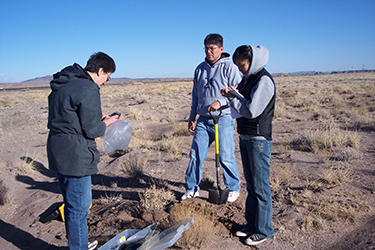
Earlier this year, Ingram visited another university. A white male scientist showed her around. Then another woman met them for the tour. She kept calling the man “Dr. Ingram.” Finally, the man pointed at his guest and said, “No, this is Dr. Ingram.”
The woman “was so surprised,” Ingram recalls.
Her Native American students have had similar encounters. When they go to scientific meetings, some people seem to think they are conference center staff members instead of fellow researchers.
These incidents are tough. And it’s natural to feel mad. But Ingram advises simply pointing out, politely, that they were wrong. “Usually, the person gets embarrassed,” she says.
Black, Hispanic and Native American students still face obstacles in STEM. But determination can go a long way. Their reward is a career tackling some of the most pressing issues the world faces. “This is a chance for you to use your brainpower to solve important, hard problems,” Gibbs says of a STEM career. “Don’t lose sight of that.”
NEXT WEEK: “Disabilities don’t stop top tech and science experts“
* Disclosure: Author Roberta Kwok has written articles for the National Cancer Institute. It’s one of the National Institutes of Health, as is Gibbs’ institution.
This is the first in a two-part Cool Jobs series on the value of diversity in science, technology, engineering and mathematics. It has been made possible with generous support from Arconic Foundation.







